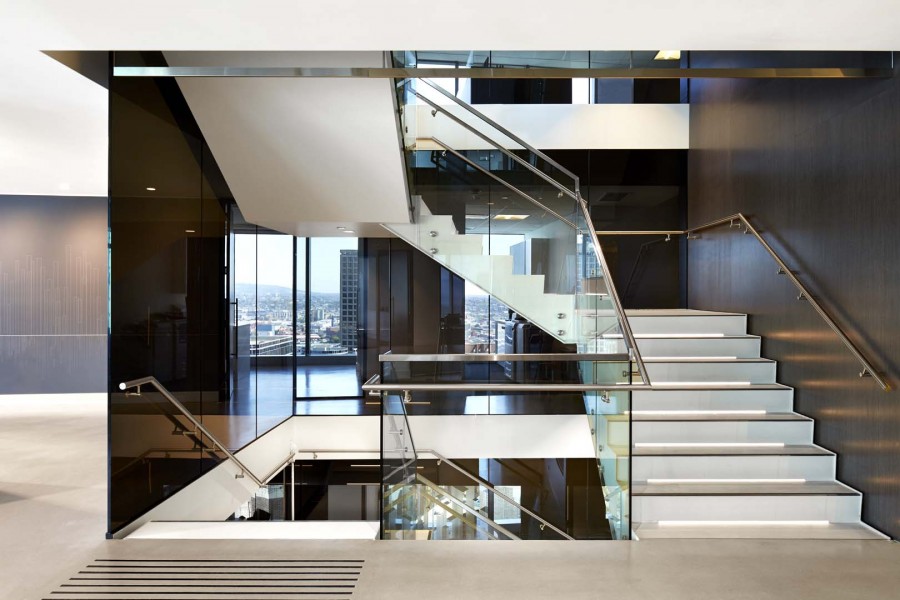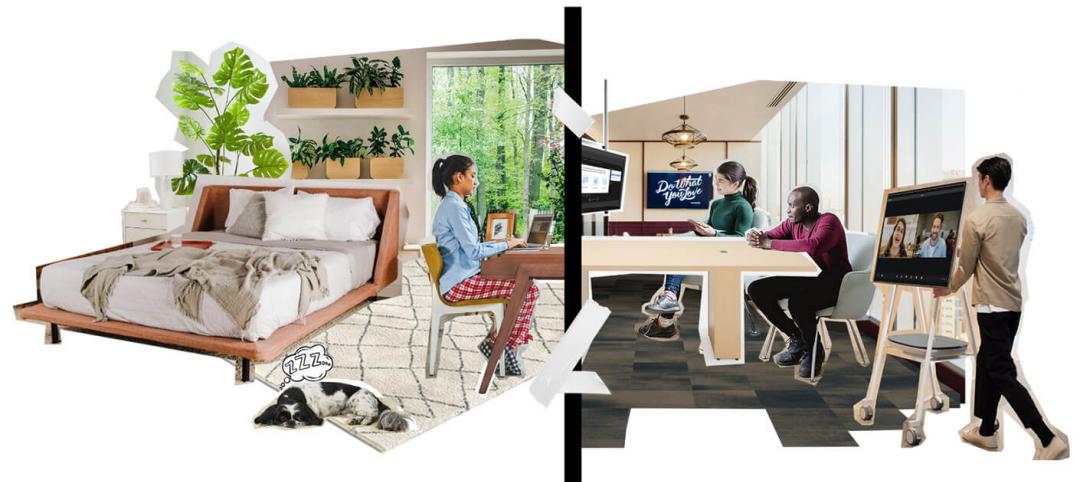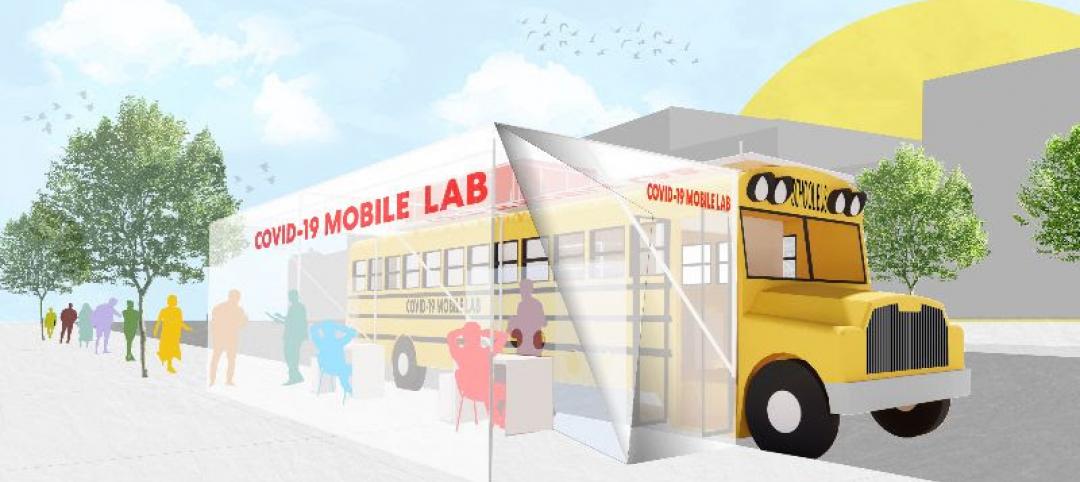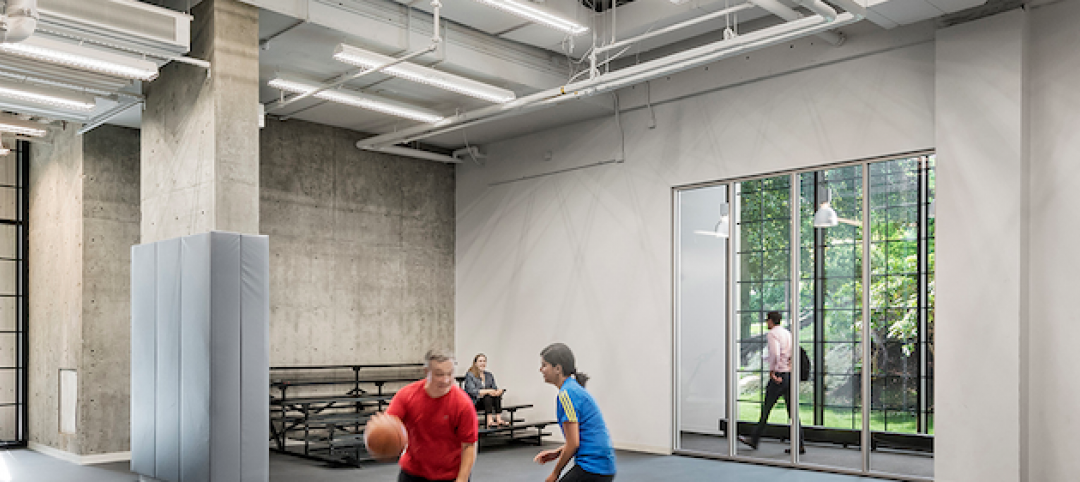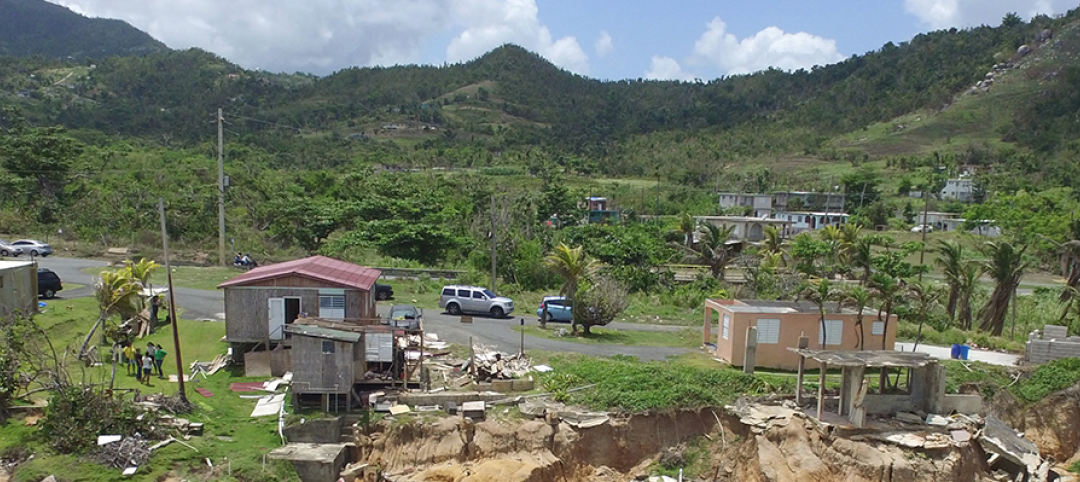The most successful workplaces enable a clear flow of ideas and people, allowing multi-disciplinary collaboration to be spontaneous and effortless, and corporate culture to be inherently experienced by both occupants and visiting clients.
However, achieving this ideal is challenging for workplaces that occupy multiple levels. In these workplaces the inherent separation between occupants reduces the likelihood that impromptu and idea-generating conversations will naturally occur. We often see client spaces grouped on a single floor, separated from the day-to-day workplace activity. These spaces can seem formal and can lack the buzz of activity and sense of corporate culture that the current workplace trends favor.
So, how do we support the flow of ideas and people in a multi-level workplace? Below are some strategies that have proven successful:
1. Plan stacked “anchor” destinations. Borrowing a strategy from retail design in which shopping malls have “anchor” stores at different corners of the mall to draw foot-traffic, workplaces can similarly plan for anchor destinations within different levels of the building to attract occupants and to encourage vertical flow. The desire for shared spaces such as bookable rooms and lounges, and the necessity for shared functional spaces such as the copy room and administrative spaces, draws occupants to these destinations. When occupants have a reason to move through the workspace, a more dynamic atmosphere is created resulting in more spontaneous collisions and multi-disciplinary collaborations.
2. Activate client spaces. A buzzing reception area gives visiting clients a real glimpse of the organization’s culture while offering a welcoming environment for occupants to dwell and converse. The trend is to create inclusive spaces that blend client reception/waiting areas with informal work areas and destination cultural spaces. This is one way to activate the space and allow clients feel like contributors to the corporate culture. Another strategy to activate the client space is to distribute it throughout the multi-level workplace and expand the client’s experience to multiple floors. This allows both clients and occupants to move vertically within the space, maximizing opportunities for interaction and idea exchange.
3. Make it enjoyable to move through the space. The principles of active design teach us that users are more likely to use the staircase if it is an enjoyable experience. In addition to providing health benefits, the staircase provides ample opportunity for spontaneous collaboration and idea sharing which might otherwise be missed. To create this effect, stairs should be central, prominently placed, and wide enough to enable conversations to happen with ease; ample stair landings and visual connection between floors can enhance the experience. Similarly, welcoming corridors with periodic “perches” or respite places invite people to stop and converse.
4. Facilitate collaboration everywhere. The success of collaborative opportunities can be further heightened by making technology easily available to support communication . The ability to charge devices, access the network and WiFi, share screens, and record ideas allow impromptu collaboration to be both enjoyable and productive.
Case Study: CBRE, Vancouver
We applied the strategies above when designing CBRE’s new office in downtown Vancouver. Relocating from a single-floor space, CBRE’s new home is spread across four floors amounting to nearly 23,000 square feet in the newly constructed MNP tower.
Destination planning played a key role in making the office a “buzzy” space. The deliberate separation and stacking of key functional areas across the different levels ensured that movement became integral to experiencing the workplace.
The reception area is surrounded by a variety of small to medium-sized meeting rooms. These rooms are appropriately sized to the majority of meetings hosted by CBRE, therefore ensuring that this area is activated all day as a destination for both employees and clients. Switchable electronic glass on the room fronts provide occupants with privacy when desired. When deactivated, the glass reveals the spectacular views across Vancouver Harbour, which significantly adds to the space’s desirability.

On an upper level, these breathtaking panoramic views are reserved for the employee café. This café represents the cultural heart of CBRE as the daily gathering place for their multidisciplinary employees. By positioning the executive boardroom adjacent to this café, visiting clients can experience the buzzing café and see for themselves the CBRE collaborative culture in action.


To maximize vertical movement, the most important design feature for CBRE is a stair connecting all four levels. The stair is centrally located and generously proportioned with two landings between every floor. Encased in floor-to-ceiling black glass, the stair makes a strong visual statement while also providing degree of privacy from the surrounding workstations. The stair is heavily activated by both clients and occupants moving between meeting spaces, cultural spaces, shared resources and various work environments.
By creating a memorable journey to stacked destinations, our design has injected energy to all floors of the workplace. People and ideas flow naturally, and both employees and clients are participants in the dynamic CBRE culture. An ideal workplace, you might say.
About the Author: As a Senior Interior Designer at Perkins+Will’s Vancouver office, Sarah Stanford has over a decade of experience across practice areas specializing in workplace, retail and hospitality design. As a vital member of the interior design team, her experience ranges from tenant improvements and prototypes to large-scale architectural projects in North America and abroad.

More from Author
Perkins and Will | Sep 19, 2023
Transforming shopping malls into 21st century neighborhoods
As we reimagine the antiquated shopping mall, Marc Asnis, AICP, Associate, Perkins&Will, details four first steps to consider.
Perkins and Will | Jul 20, 2023
The co-worker as the new office amenity
Incentivizing, rather than mandating the return to the office, is the key to bringing back happy employees that want to work from the office. Spaces that are designed and curated for human-centric experiences will attract employees back into the workplace, and in turn, make office buildings thrive once again. Perkins&Will’s Wyatt Frantom offers a macro to micro view of the office market and the impact of employees on the future of work.
Perkins and Will | May 30, 2023
How design supports a more holistic approach to training
For today’s college athletes, training is no longer about cramming team practices and weight lifting sessions in between classes.
Perkins and Will | Dec 20, 2022
4 triage design innovations for shorter wait times
Perkins and Will shares a nurse's insights on triage design, and how to help emergency departments make the most of their resources.
Perkins and Will | Aug 30, 2021
The great re-shuffle & re-think
In this new hybrid environment in which we cater to how our employees work best, how will we manage new hybrid work practices and etiquette?
Perkins and Will | May 18, 2020
Global design firms collaborate on new COVID-19 mobile testing lab to bring testing to vulnerable communities worldwide
Perkins and Will, Schmidt Hammer Lassen Architects, and Arup Group develop scalable solutions for increased testing capacity within high-density and under-served neighborhoods.
Perkins and Will | Jun 7, 2019
Workplace wellness: Top 3 tips for Fitwel certification
How can thoughtful design encourage healthier choices, lifestyles, and work environments?
Perkins and Will | Feb 27, 2019
ResilientSEE: A framework to achieve resilience across scales
Conceived in the Boston studio of Perkins+Will, the ResilientSEE team developed a resilient planning framework that can be applied to other neighborhoods, cities, and countries.
Perkins and Will | Nov 28, 2018
Amazon HQ2 and the new geography of work
The big HQ2 takeaway is how geography and mobility are becoming major workplace drivers.
Perkins and Will | Sep 4, 2018
It takes more than money to fund resilience
Resilient design, much like all projects in the built environment, requires funding.

